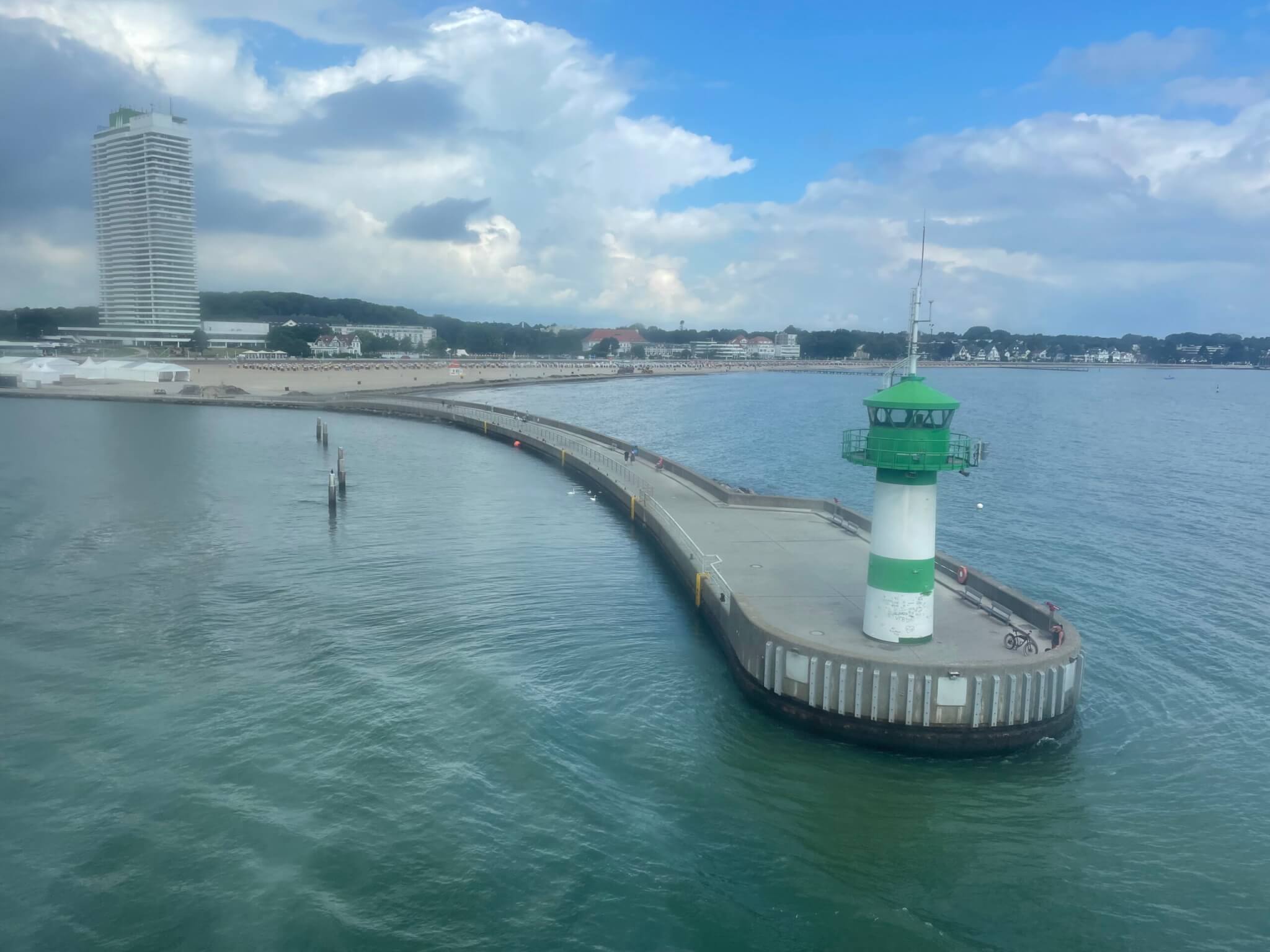
Weltbilder, world images, and perspectives (thinking about Biesta’s work…)
Yesterday I listened to a podcast interview with Gerd Biesta called “After the age of world-view”. It is an episode in a series of podcasts as research for a book, which I think is a brilliant idea — record interviews with the double use as interesting podcast episodes AND data for research! Bam! Plus this one was super interesting, although it feels like I did not understand half of it despite trying to read up on some of the points… But here we go with my summary!
Biesta is talking about “Weltbild”, world images, and his reading of Heidegger (whom I have never read myself, but maybe I should). He argues that if we have a “world image”, the world also becomes an image, and is not seen as itself, as what it really is. This means we begin to loose the world, and with that, ourselves.
Having a “world-view” is actually not something that people have always had, for example in ancient Greece or so. Drawings did not have perspectives until a couple hundred years ago (for example in ancient Egypt or in mediaeval art), and drawing with a perspective defines a viewpoint, a standpoint, in relation to the world. If we accept that we have a world-view, everything becomes subjective, and an individual becomes a world-viewer. And anyone’s perspective is assumed to be as valuable as anybody else’s. But how does the individual end up in that exact position that gives them that specific perspective? And what makes that perspective valuable?
(On that topic, check out my featured image, taken right before I listened to this podcast: I took several pictures sailing past that lighthouse in Travemünde because I wanted the perspective to be just right, with the lighthouse in the foreground in the lower right corner, and the pier sloping towards the upper left! At least I chose my viewpoint for this image very consciously! :-D)
As human beings, we are free, but that also means that we have to act. Freedom is not just a matter of having choice, because that would mean that the world doesn’t matter. We have to ask ourselves: What do I do with my freedom? We experience that question when we are confronted with the world around us. But then the world is not just an image, but real, it asks questions and has demands: the world meets us.
And that is where we need to “turn the arrow around” (as Biesta writes in 2025): If we think about the common model of the didactic triangle, we have the teacher, student and content/world at each corner. We have arrows from the teacher to the subject (which signifies the preparation that the teacher needs to do), from the teacher to the student (instruction) and from the student to subject (learning). But if we turn that last arrow around (and probably also the one from subject to teacher), the world goes from being the object of learning/sensemaking to being a subject with its own integrity, putting questions and demands on the student. This is what Biesta describes as “world-centred education“.
In “taking the angle of the teacher”, Biesta (2025) explains how education is more than learning (which everybody can do by themselves). He offers criticism of the understanding of teachers as facilitators of the learning of learners in a powerful learning environment: what’s different from kids in mines that learnt very quickly to do their jobs very well? (or, as in Biesta (2019), an efficient robot vacuum cleaner optimising their route over time as they explore their learning environment?). He claims that “education only has a point for those things that cannot happen without education“.
Teaching is then the “art of redirecting someone’s attention“, pointing to what to pay attention to (or “key for the work of teachers is not to see themselves as interrupters or ‘addressers’ but rather as those who try to turn students away from their being-with-themselves and try to turn them towards ‘the world,’ that is towards what may address them” as he writes in Biesta (2019)).
There are three main “gifts” of teaching:
- curriculum: “to give student what they didn’t ask for. This is not in order to be difficult for the sake of being difficult, but precisely to open up possibilities – in the world and in themselves – that they couldn’t have envisaged or imagined“
- didactics: “not just […] giving students information, but also giving them the conditions under which this information can make sense to them“
- pedagogy: “give students to themselves“, be the subject of their own lives, develop self-efficacy
But back to the world-views and redirecting attention. If teaching means guiding attention, the teacher does not need to know everything in advance (which is impossible anyway), and they also don’t need to feel as if they should be able to do that. They don’t need to bring students to where the teacher has already been, but open up the world to students in an educationally significant way; let them do something they cannot already do themselves. This requires hard work on the side of the teacher to also learn continuously; if the world is a subject that throws questions at us, it also throws them at us as teachers.
The whole ecological crisis is an example of where the distance to the world is problematic, where the world has been seen and treated an object, has had no voice. In that perception, it is not surprising that teachers become bottlenecks in sustainability education because they don’t feel they are the experts when they cannot — and should not try to — be the experts.
One thought that I do not fully grasp yet is that what we try hard to do in interdisciplinary projects is to throw all the knowledge of all disciplines towards solving the problems of the world, and we assume that we can solve it, but that that is arrogant because the world is so much more than a problem to be solved. Yes, I can accept that the world is more than just a problem and that it is arrogant to think we can understand it all, but then what is the alternative to trying to solve at least some of the problems that we have identified? Maybe I am too stuck in my thinking, but I cannot make sense of this right now.
One last point from “taking the angle of the teacher” (Biesta, 2025) I really enjoyed, though, is on the understanding of what schools are, or should be. He writes that “School time as free time, as time made free and held free, is time not yet claimed by the productive demands of the economy (the demand to be a ‘good worker’) or the civic demands of society (the demand to be a ‘good citizen’)“, so students can come out of it as the subject of their own life “and not as object from external forces, agendas and demands“. Learning in real-life situations, in contrast to in schools, might be good for learning functional knowledge (like the kids in the mines or the robot vacuum), but not critical knowledge. But critical knowledge is critical for the future that is unknown, but that might feel more pre-determined than it actually is: “many changes that happen now and in the future are not natural necessities, but are actually the result of deliberate decisions“. And we need critical knowledge to say yes or no, to stop developments that we don’t want to happen and drive other developments instead: “it has to do with the need to not just have the ability to adapt to change, but to always also come to a judgement as to whether the situation one finds oneself in is worthy to adapt to or rather requires that we resist.”
And now my brain needs a break.
Biesta, G. (2019). Teaching for the possibility of being taught: World-centred education in an age of learning’. E-Journal of Philosophy of Education, 4, 55-69.
Biesta, G. (2025). Taking the angle of the teacher: The GTC Scotland Annual Lecture 2024. scottish educational review, 55(1-2), 175-191. (And that article is very similar to: Biesta, G. (2025). The future of education in the impulse society: Why schools and teachers matter. Prospects, 1-9. I have to mention that here so when I google my own blog to see if I have read a specific article I find this note and the answer is yes!)
Biesta, G. (2025). Turning the arrow: education after the age of the world-view. Asia Pacific Journal of Education, 1-11.
I was looking out at the Baltic Sea and the wake of this ship while listening to the podcast. They should really clean their windows better!
And then we arrived in Trelleborg!
And while I was waiting to be picked up and escorted to the shuttle bus to the terminal, I had time to take pictures in the almost empty ship.
And the port of Trelleborg with interesting clouds!
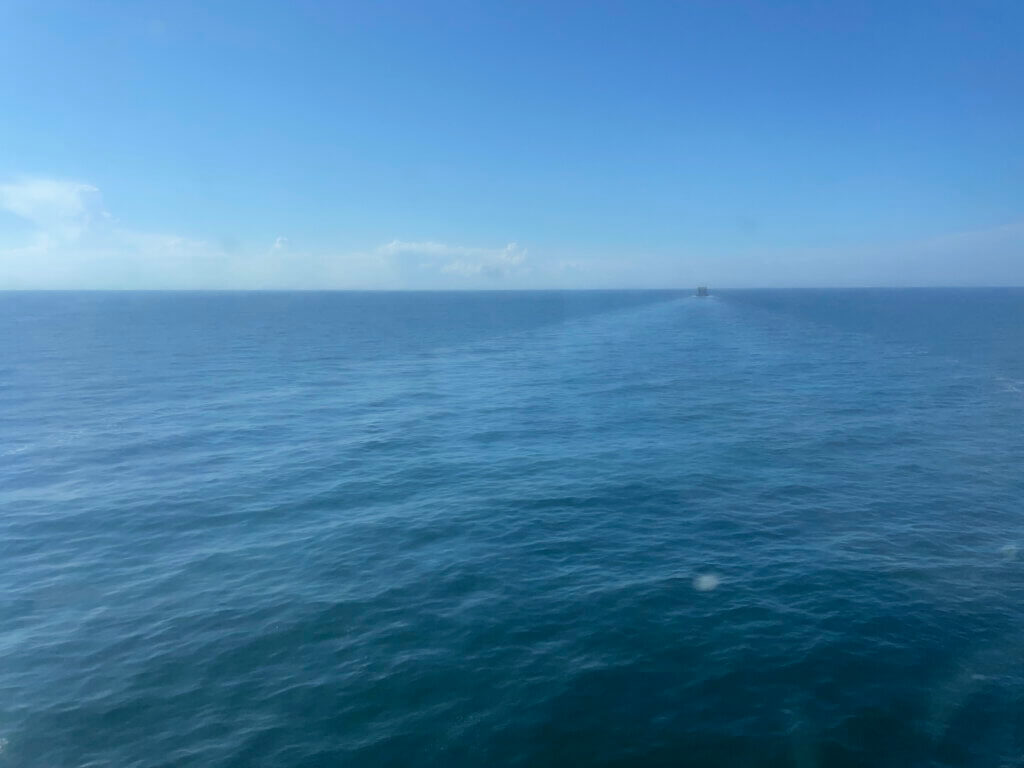
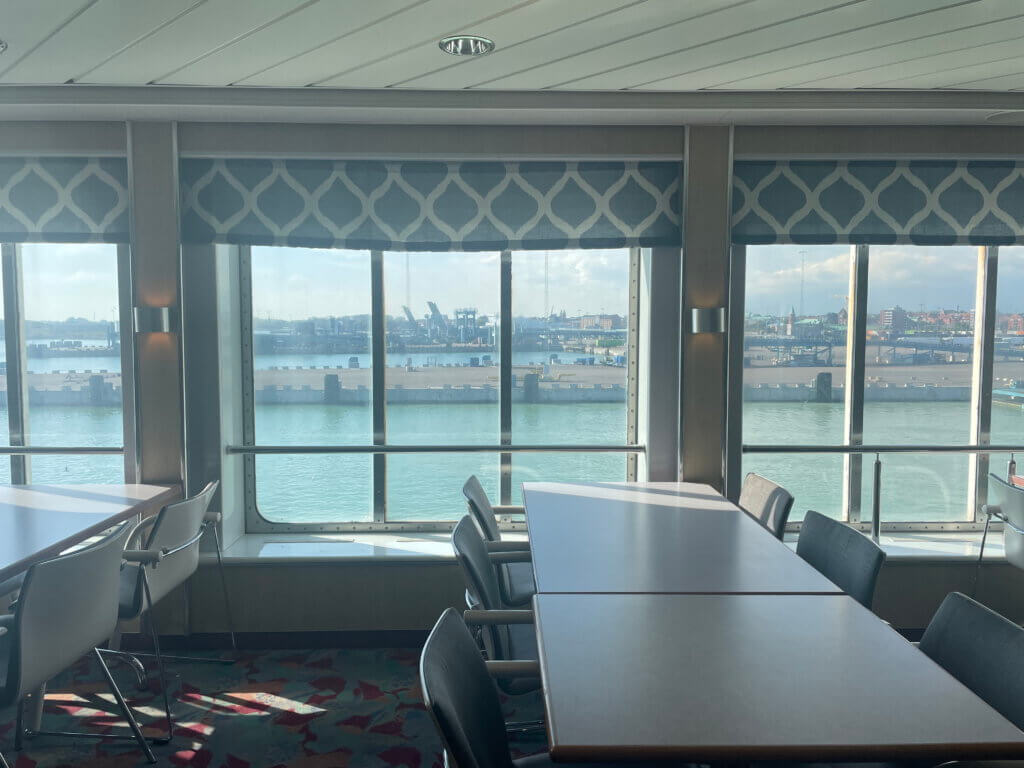
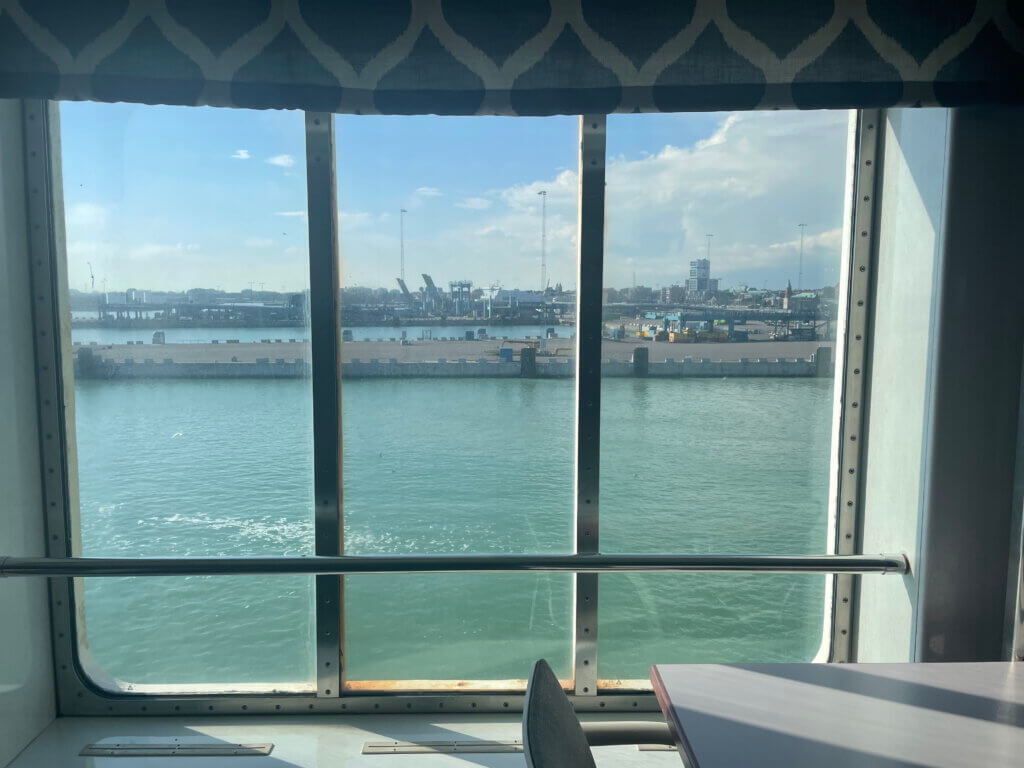
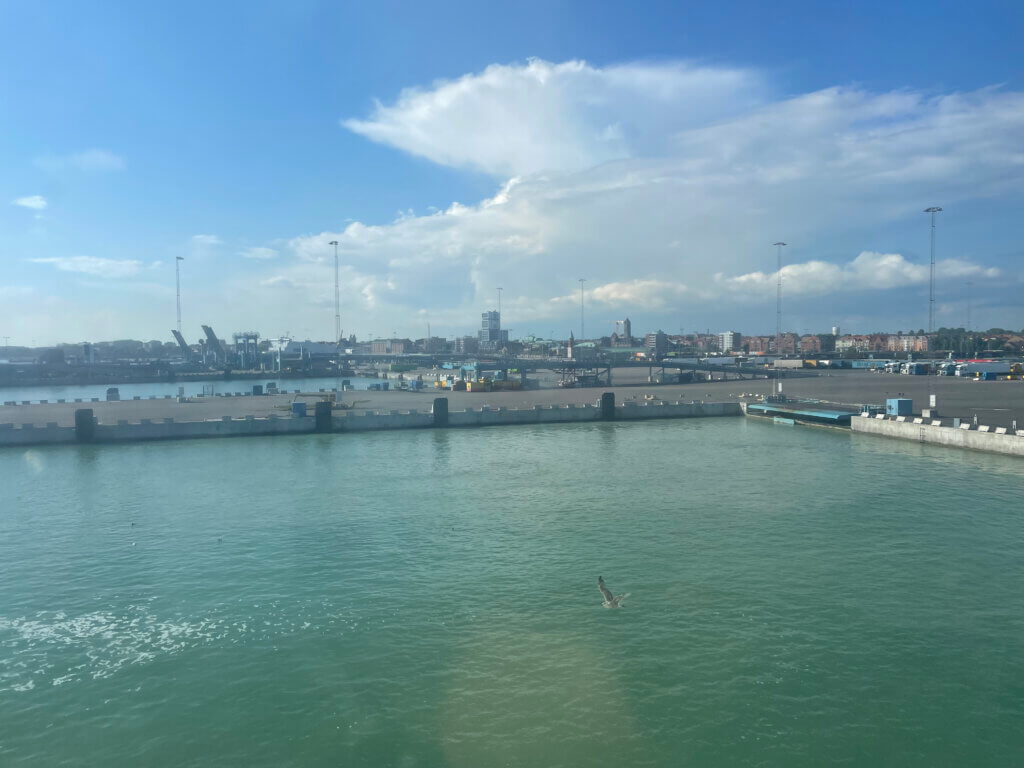
On redirecting attention - Adventures in Oceanography and Teaching says:
[…] a lot about the “turning the gaze” / “redirecting attention” part of the recent Biesta work that I read, it resonates with me so […]